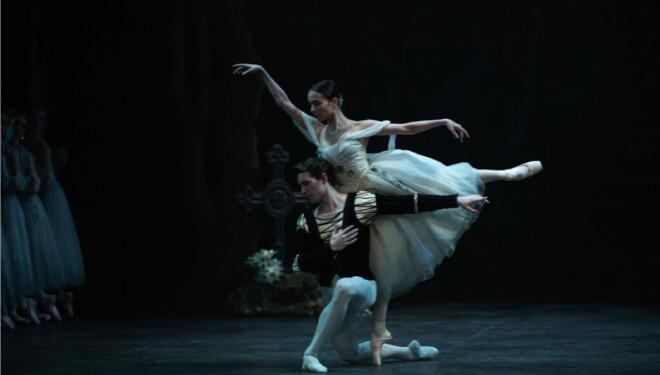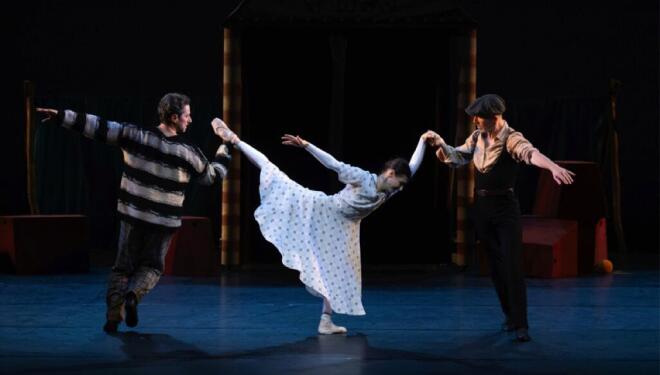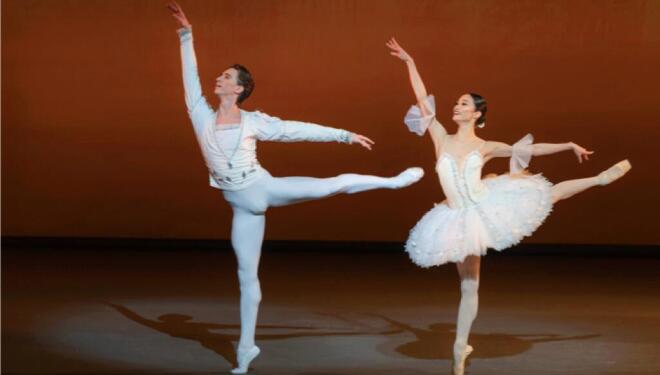
Giselle premiered in Paris in 1841 at the height the Romantic period, and its tale of love betrayed and forgiveness blended with the supernatural proved an instant hit with audiences. And so it’s remained over the years - one of the best loved, most performed ballets in the international repertoire.
Set in a Rhineland village at the time of the grape harvest, it tells the story of the young peasant girl Giselle who lives to dance and for the love of Albrecht, who, unbeknownst to her, is an aristocrat just out to have a little fun. When his betrayal is revealed she dies of a broken heart.
Act II is set in a forest where the Wilis, the vengeful spirits of women who died before their wedding day, return at night and force any man who ventures into their demonic realm to dance to death. A remorseful Albrecht is only saved through the intercession of Giselle’s forgiving spirit.
The story, written by Théophile Gautier, was choreographed by Jean Coralli and Jules Perrot on a specially commissioned score by Adolphe Adam; and although the ballet has undergone many changes, revisions and accretions since its Paris premiere, the version danced by English National Ballet is as close as possible to the original, following extensive research and a meticulous reconstruction by Mary Speaking.
Mary Skeaping’s 1971 Giselle is of great interest to purists for the way in which she reintroduces elements long discarded, rearranges the order of scenes, and boosts the role of Myrtha, the daunting Queen of the Wilis.
For general audiences though, what appears on stage is a rather old-fashioned production with much to enjoy. Act I is depicted in muted tones drawn from nature: Giselle’s dwelling is a wooden cabin, the jolly peasants are dressed in simple costumes where tones of brown predominate.

English National Ballet in Mary Skeaping's Giselle © Laurent Liotardo
In Act II, set in a ghostly, barely moonlit forest, the Willis' long skirts are not the immaculate white of other productions, but are tinged green - they are, after all, forest dwellers.
But, disappointingly, the lead performances on opening night were also a little muted. Tall, willowy and a good dancer, Alison McWhinney nevertheless lacked the sharpness and authority that make Myrtha such a blood-chilling figure.
Aitor Arrieta’s Albrecht was a one-note performance throughout, with no narrative arc. From the moment Albrecht walks on stage, he must signal he is a bit of a cad, an entitled aristocrat out to have some inconsequential fun with a pretty peasant girl. This is not something that comes across in Arrieta’s performance. His dancing is elegant, but not eloquent.
Katja Khaniukova’s Giselle is competent, but doesn’t really grab you; and throughout there was little chemistry between the two leads.
On the plus side, the ensemble are dancing well, with the Wilis in Act II well-drilled if a little heavy on their feet in the famous scene where they hop across the stage in arabesque.

English National Ballet in Mary Skeaping's Giselle © Laurent Liotardo
English National Ballet Philharmonic conducted by Gavin Sutherland gave a competent reading of Adam’s score, even if at times its tempi dragged a little.
READ OUR EXCLUSIVE INTERVIEW WITH SANGEUN LEE AND GARETH HAW, WHO DANCE THE LEADS IN SOME PERFORMANCES OF GISELLE, HERE
Age Guidance: 10+
| What | English National Ballet, Giselle Review |
| Where | London Coliseum, St Martin's Lane, , London , WC2N 4ES | MAP |
| Nearest tube | Charing Cross (underground) |
| When |
11 Jan 24 – 21 Jan 24, 19:30 Thu & Sat mats at 14:30. Sun at 14:30 only Dur.: 2 hours 15 mins inc one interval |
| Price | £15-£95 |
| Website | Click here to book |



